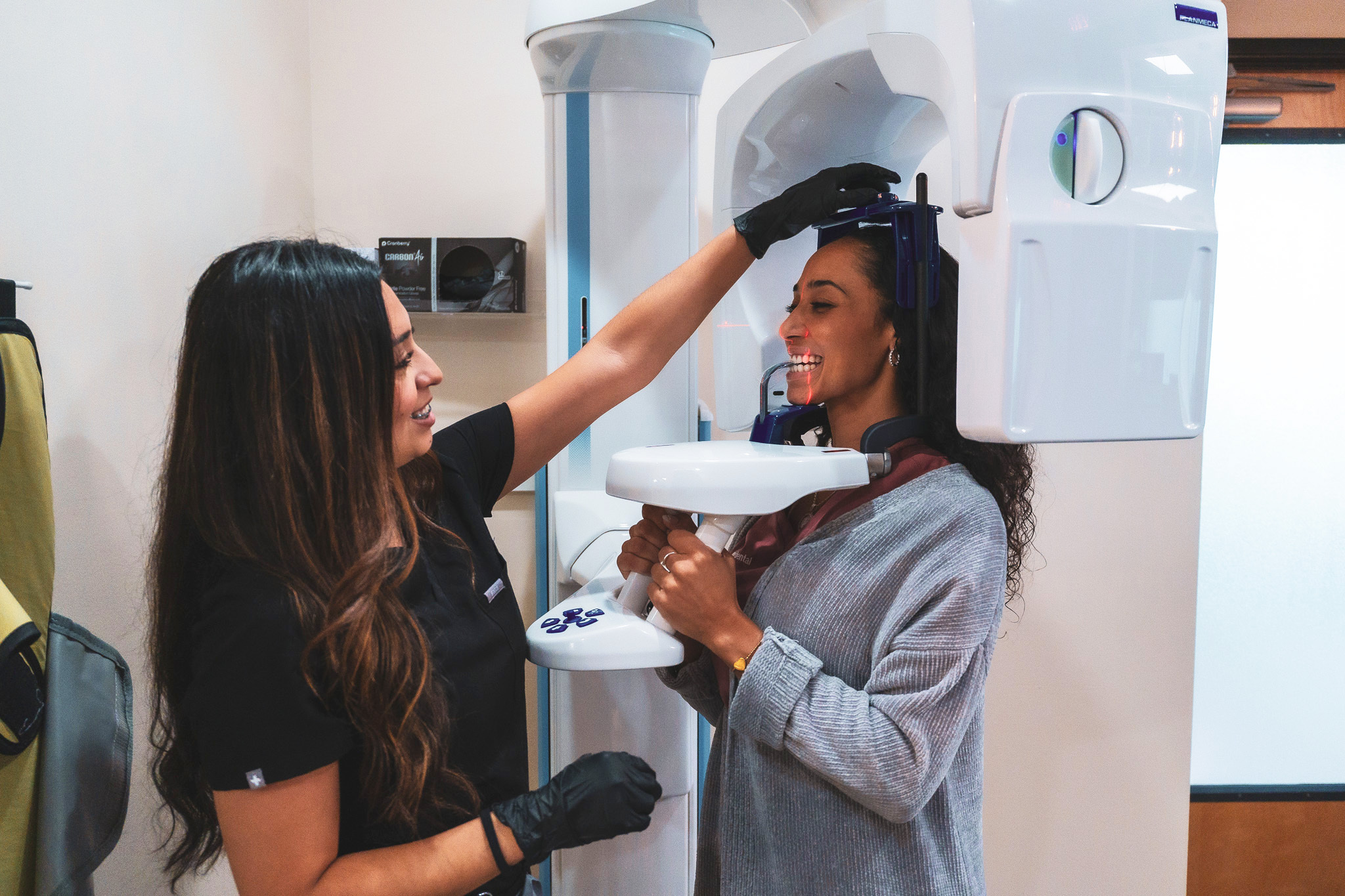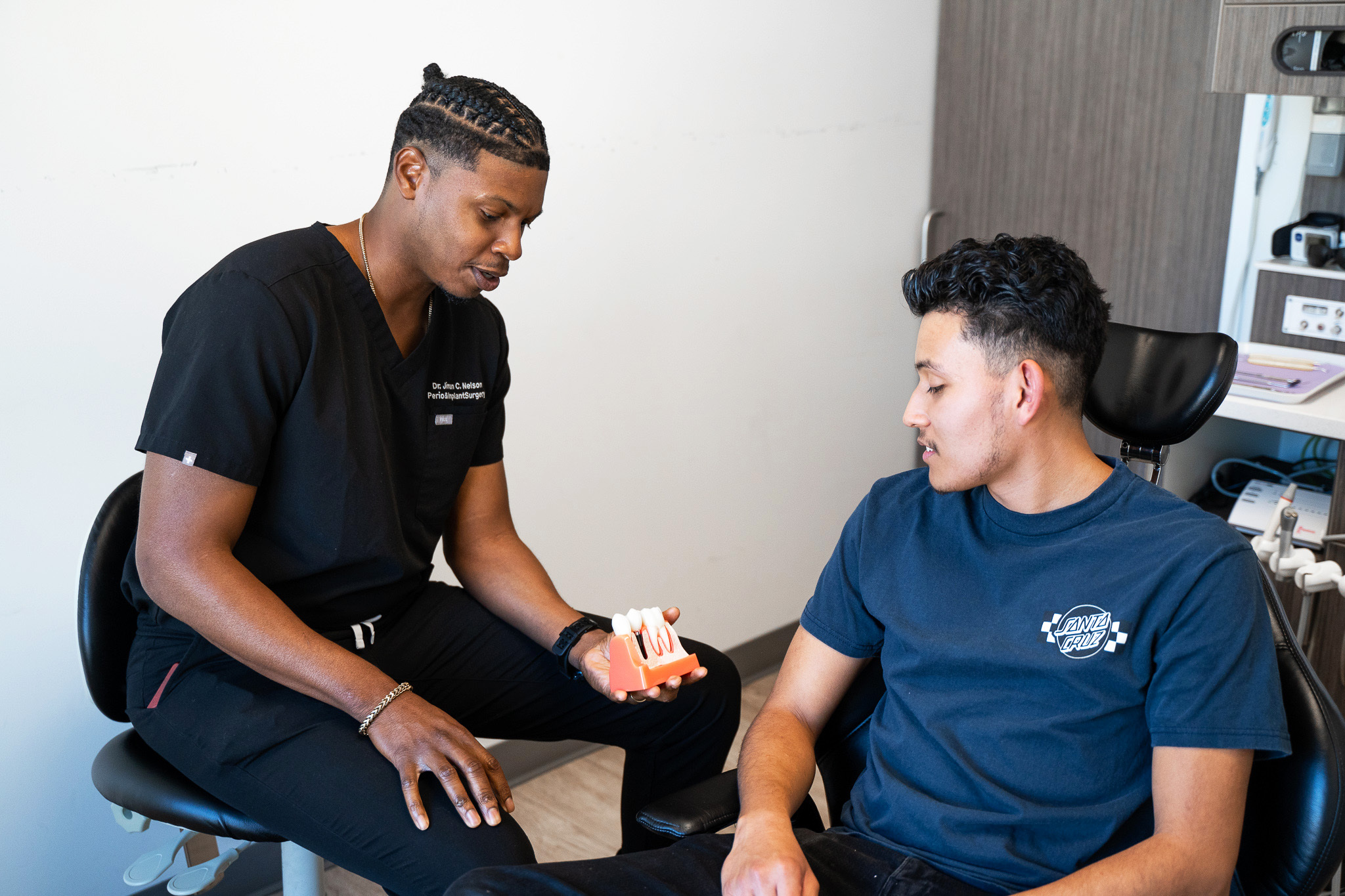Gum disease, also known as periodontal disease, is a serious infection of the gums that can lead to tooth loss. Gingivitis is a milder form of gum disease that can usually be reversed with good oral hygiene. However, if gingivitis is not treated, it can progress to periodontitis. Periodontitis is a more serious form of gum disease that can damage the gum tissues and bone that support your teeth.
One treatment for periodontitis is gingivectomy, which is a surgical procedure to remove diseased gum tissues. Gingivectomy can be performed using a scalpel, laser, or electrosurgery. URBN Dental offers laser gingivectomy, which is a minimally invasive option that uses a laser to remove the diseased gum tissues. Laser gingivectomy is often associated with less bleeding, swelling, and discomfort than traditional gingivectomy near me procedures.
If you are suffering from gingivitis or bacterial infections, we highly recommend that you seek treatment from a periodontist. URBN Dental offers laser dentistry in Houston, TX, and our team of periodontists can help you restore optimal gum tissue health and oral health. You can find our dental office in Uptown Houston, Midtown Houston, or Montrose.
If you live in or around River Oaks, Galleria, or Highland Village, you can find our dental office a short drive from the Galleria shopping mall. Please schedule an appointment for your gum surgery to address the root cause of your diseased gum tissue in Houston.
How is the health of your teeth and gums?
Do Your Gums Bleed When You Floss?
Gingivectomy is a surgical procedure to remove infected gum tissues and bone in order to stop the progression of gum disease. The first step in gingivectomy is to make an incision in the gum line. This exposes the underlying bone. The surgeon then removes the infected gum tissue and bone, following which the incisions are closed with stitches.
After a gingivectomy, it is important to practice good oral hygiene. This includes brushing and flossing your teeth twice a day and using an antibacterial mouthwash. You should also see your dentist regularly for cleanings and checkups.
In addition to treating infections of soft tissues, gingivectomy near me can also be used as a cosmetic procedure for a gummy smile. If you are self-conscious about a gummy smile, the dentist can use a low-frequency laser to remove the excess gum tissues and improve the aesthetic appearance and proportions of your teeth and gums.

This type of gingivectomy is done with a scalpel, which is a small, sharp knife. The scalpel is used to carefully remove excess or diseased gum tissues. This gingivectomy near me procedure causes more post-treatment bleeding, and the recovery process is more involved.
Laser gingivectomy is done with a specialized laser that can carefully remove infected tissues. This type of gingivectomy causes little to no bleeding and involves minimal downtime.
A gingivectomy is a periodontal surgery that removes excess gum tissues. This can be done for cosmetic purposes, to improve the fit of a denture, or to treat periodontal disease. The procedure is usually done with a laser, which helps to minimize bleeding and swelling. After numbing the area with local anesthetic, the dentist will make incisions in the gum tissues. They will then use a laser to remove the excess tissue and contour the gums. In some cases, they may also need to remove some bone.
The surgery usually takes about an hour, and you will be able to go home the same day. You will need to take pain medication for a few days and avoid hard or crunchy foods. The gum surgery site will also need to be kept clean. In most cases, the results of a gingivectomy are permanent. However, if you have periodontal disease, you will need to continue to care for your teeth and gums to prevent the disease from coming back.

Control and Stop Inflammation Before It Harms Your Teeth & Gums.
Houston | Katy | Montrose | West University Place | Greater Third Ward | Greater East End | North East Houston | Houston Heights | Central Northwest | Fairbanks | Acres Home | East Houston | Southeast Houston | Central Southwest | Fort Bend Houston | Brays Oaks | Meyerland Area | Sharpstown | Alief | Westchase | Memorial | Northwest Houston | Katyland | Whispering Lakes | Pine Lakes | Woodcreek Reserve
When it comes to keeping your mouth healthy, dental cleanings are essential. Many people mistakenly believe that brushing and flossing at home are enough to keep their teeth and gums clean. However, even the most diligent brushers and flossers can’t remove all the plaque and tartar that build up on teeth over time. If left untreated, this plaque can lead to gum infections, which is the leading cause of tooth loss in adults.
The best way to prevent gum disease is to get regular dental cleanings. During a professional cleaning, your dentist or hygienist will remove all the plaque and tartar from your teeth, leaving your mouth feeling clean and refreshed. In addition to professional cleanings, you should also brush twice a day and floss daily. This at-home care, combined with regular teeth cleanings, will help keep your teeth and gums healthy for years to come.
No Insurance? No problem.
© Copyright 2025 | Designed & SEO Optimized by The Doctors Marketing
Disclaimer: URBN Dental uses restorative materials such as Admira Fusion® by VOCO, which are free of BPA and Bis-GMA, and are not known to degrade into microplastics under normal oral conditions. While marketed as biocompatible and free of traditional plastic monomers, no dental material is guaranteed to be completely risk-free for all patients. This information is provided for educational purposes and does not constitute medical or regulatory advice.

Discover your perfect smile with a FREE Invisalign assessment.

Receive a complimentary 3D scan ($300 value) when you proceed with implant care.

Speak with our experts about your smile goals from the comfort of your home.
Discuss your smile goals with our experts—choose an in-office visit or a convenient 15-minute phone consult.

Quick, affordable care when you need it most.

Have questions about implants? Get personalized guidance in a brief phone call.